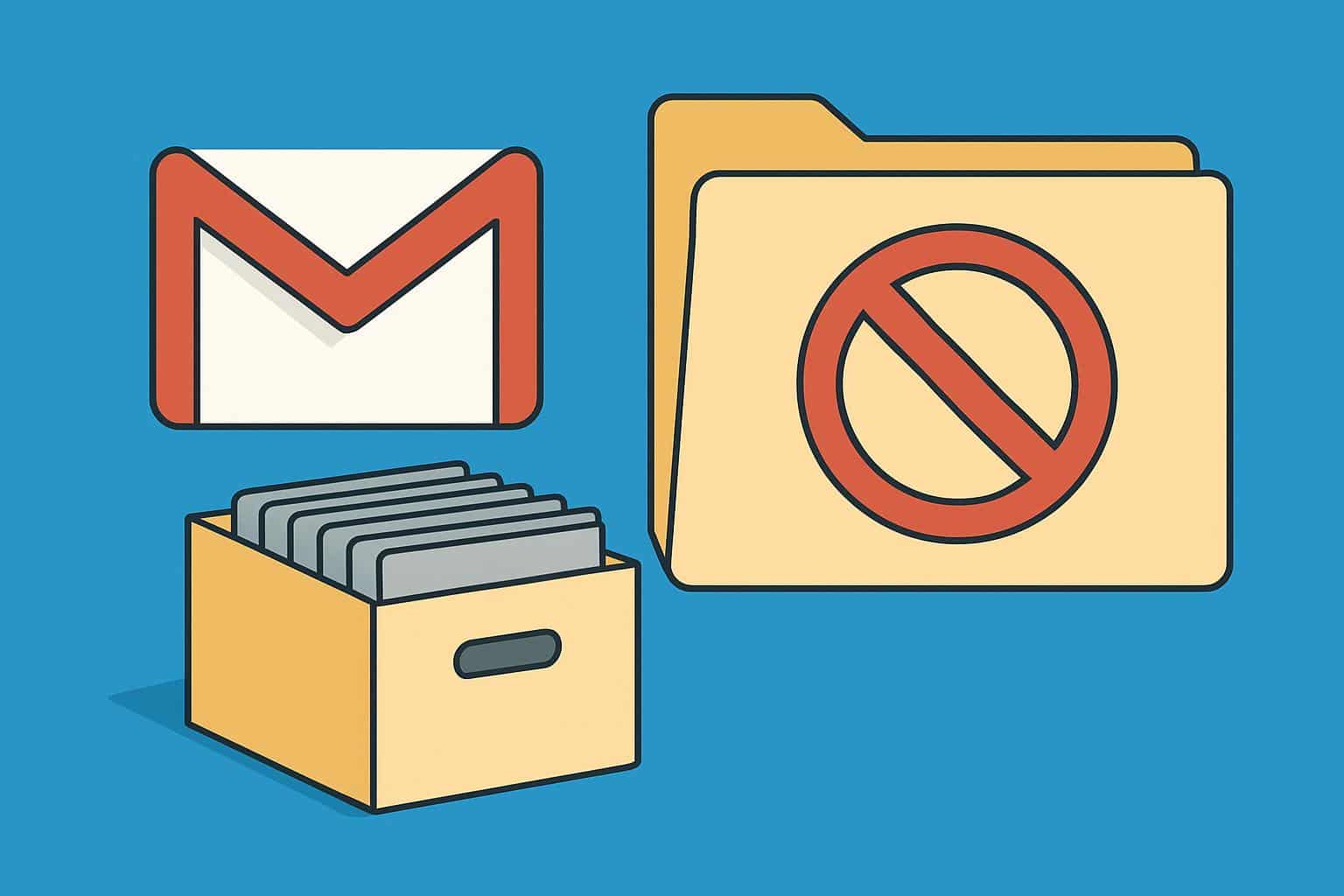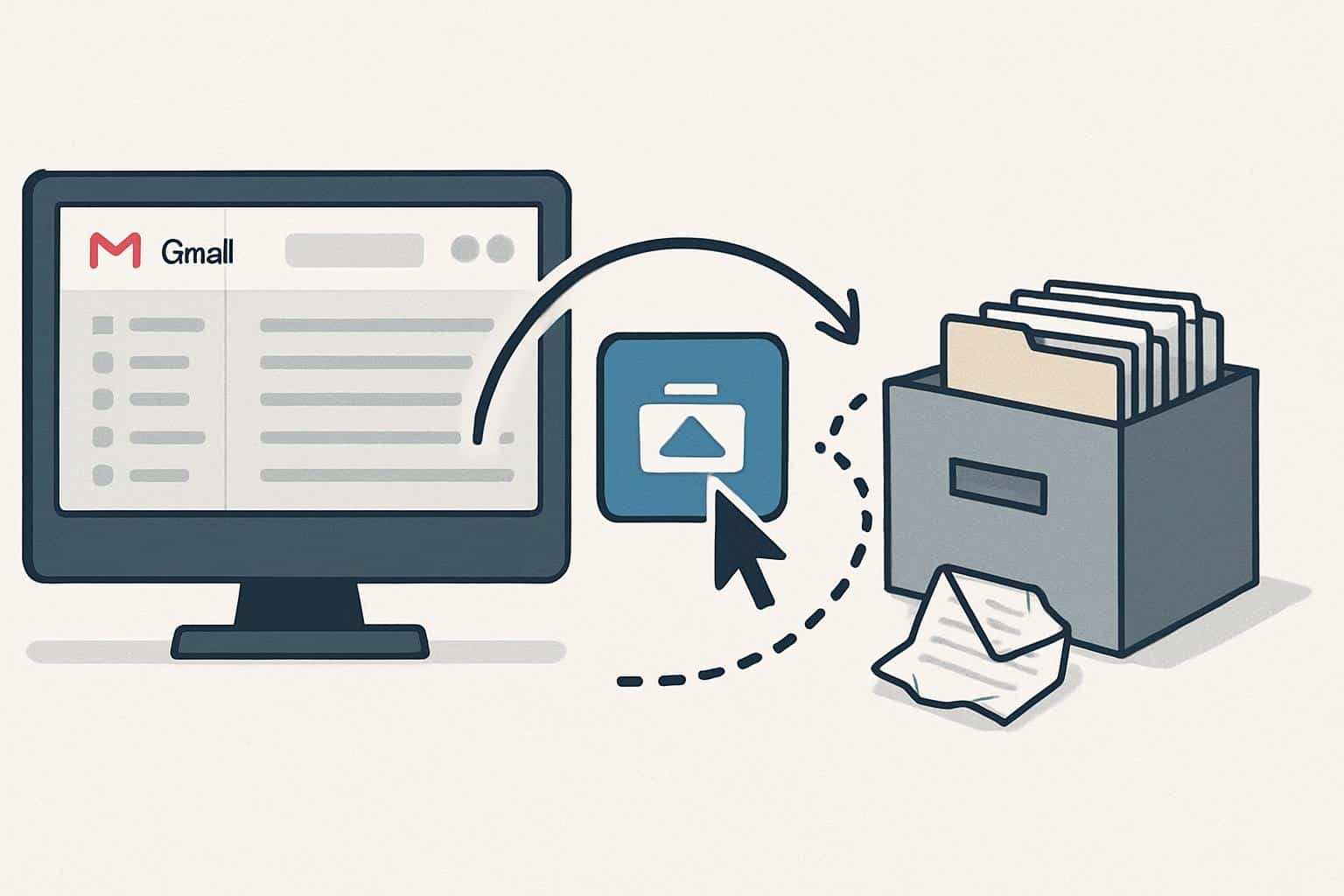Gmail’s Archive button has been around forever, but it acts less like an archive and more like a sweep that banishes messages from view. For a service that’s used by more than a billion people, that’s an issue. Available for both Mac and Windows, it’s pretty good at keeping your Inbox slim but totally shits the bed on retrieval, clarity, and simple organization — exactly what any legitimate archive should be about.
What the Archive Button Really Does in Gmail
Gmail was built based on labels, not folders. Every message is in All Mail, and views such as Inbox are merely labels added atop them. Archiving in Gmail leaves the message in All Mail, but removes the Inbox label. Unless you give it a label, that thread has now been depersonalized and is visually indistinguishable from the countless number of others.
- What the Archive Button Really Does in Gmail
- Why This Design Doesn’t Meet Users’ Needs
- Mobile Is Filled With Accidental Archives in Gmail
- Competitors Think of Archive as a Destination
- The Compliance Mirage Around Gmail Archiving Claims
- What a Practical Fix for Gmail Archiving Would Look Like
- Practical Workarounds for Gmail Users Until Then

That stuff may be tidy, but it is not archival in any conventional sense. There’s no system label called “Archived,” no archive place in the sidebar, and no visual state that sets archived emails apart from everything else. In reality, you’re kind of bunching some needles into a haystack you’ve told yourself you’ll look for one day.
Why This Design Doesn’t Meet Users’ Needs
Findability is the first casualty. Unless you happen to remember the exact search terms, finding an unlabeled message post-archive is more or less a crapshoot. Gmail’s search operator has:nouserlabels -in:inbox may surface some (but not all) of these messages, but you can’t expect everyday users to memorize search operators. Usability researchers at Nielsen Norman Group have observed for years that clear information architecture beats clever workarounds; Gmail’s archive relies too much on the latter.
The second casualty is intent. All three hide messages in different ways, but only one has a direct link in the sidebar (Snoozed). There is no natural way to recover archives. That muddies mental models and adds cognitive load — especially when a “gone is gone” tap becomes the default swipe action in mobile.
Mobile Is Filled With Accidental Archives in Gmail
On Android, the back gesture takes you along the edge of your screen — the same prime real estate which Gmail uses for its horizontal swipe gestures. It’s ridiculously easy to archive a conversation while navigating. Yes, you can customize swipe actions, but abilities are severely limited and none will let you add your own label or a simple “Archived” state. The result: Messages often disappear into thin air, and nobody knows where they went.
Competitors Think of Archive as a Destination
Microsoft Outlook behind the scenes shuffles emails to a special Archive folder, visible everywhere. The Mail app also adds an Archive mailbox for each account. Yahoo Mail and Proton Mail also offer Archive as a top-level destination. That matters, because muscle memory and expectations are created by patterns across apps. Statistics gleaned from Litmus’s email client market share reports show us all that both Gmail and Outlook are the 500-pound gorillas when it comes to usage, so there are millions of people switching contexts every single day. Gmail has a label, not a place, so it’s the outlier.
The contrast is jarring: in one click, a rival makes archive retrieval a snap; Gmail makes it a search drill. It’s not that Gmail’s label system is flawed — it just feels as though archiving, as a concept, deserves a more cohesive dwelling.

The Compliance Mirage Around Gmail Archiving Claims
Some say that Google Workspace’s Vault for retention and eDiscovery is a sign Gmail does archiving well. Vault is great for legal holds and compliance, but it’s an admin tool, not an end-user archive experience. Lumping together compliance retention and everyday archiving obscures a fundamental fact: Regular users still don’t have an easy system for stashing away, and later reaching into the past to find, messages without friction.
What a Practical Fix for Gmail Archiving Would Look Like
The simplest answer is a system Archive label that always gets applied when someone archives something, surfaced prominently in the sidebar on web and mobile. Maintain the label metaphor, but offer a place to visit and a persisted state! Bring back a quick filter chip — Archived — next to Unread and Starred, and widen the window for mobile undos after swiping by mistake.
Power users would love more swipe customization: one swipe action for a chosen label, star + archive in one gesture, or direct to Archive with the option to auto-apply context labels from sender or thread.
None of it is a revamping of Gmail’s core; rather, it turns archiving from a magic act into an accountable practice.
Practical Workarounds for Gmail Users Until Then
Set up your own “Archive” label and adjust filters so incoming messages that deserve the auto-labeling will be marked as read and automatically skip your Inbox, if you plan to file it away. Retask swipe gestures for star or read to prevent accidental archiving. If it does, use those search operators when something disappears — like in:all -in:inbox or has:nouserlabels -in:inbox (and consider labeling before archiving proactively).
Email is still the internet’s killer app — Radicati Group estimates that more than 269 billion emails are sent daily — and Gmail’s search and spam filtering make it one of its most powerful weapons. But archiving is a weak point that undermines the service’s best features. Design users a real archive that they can see and browse and understand, and Gmail would change something that has been distracting people for too long into an actually useful part of the product.

